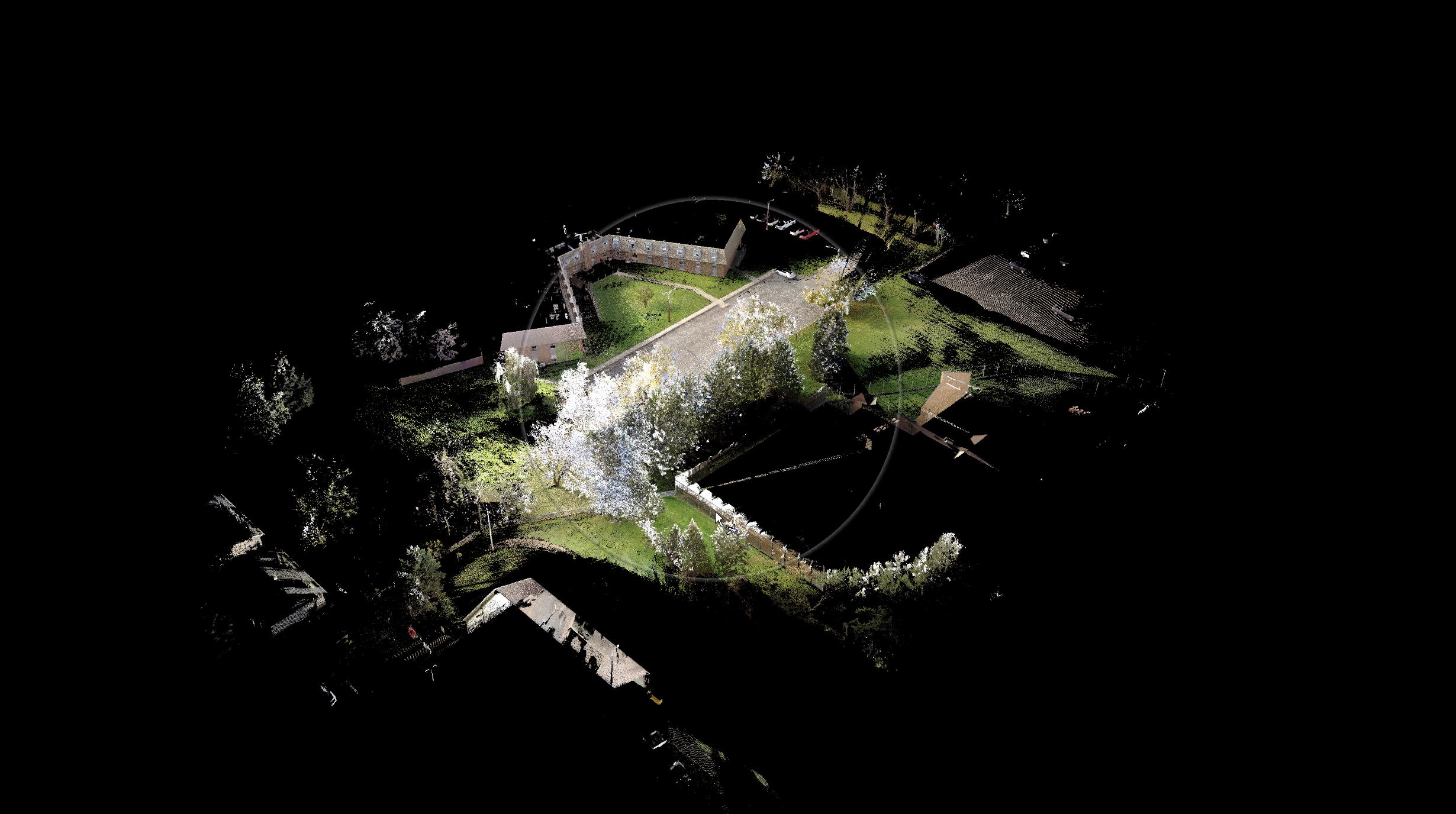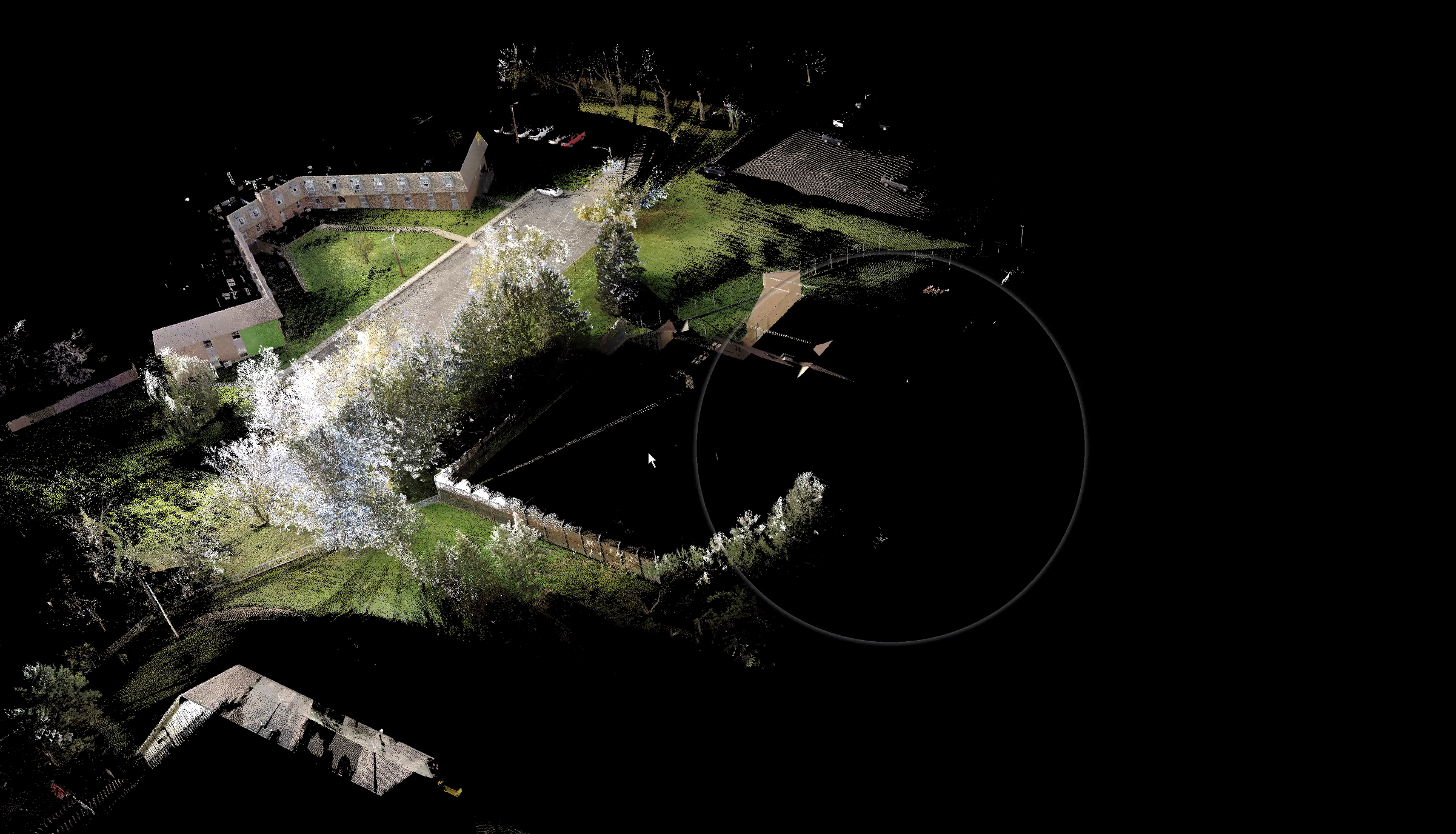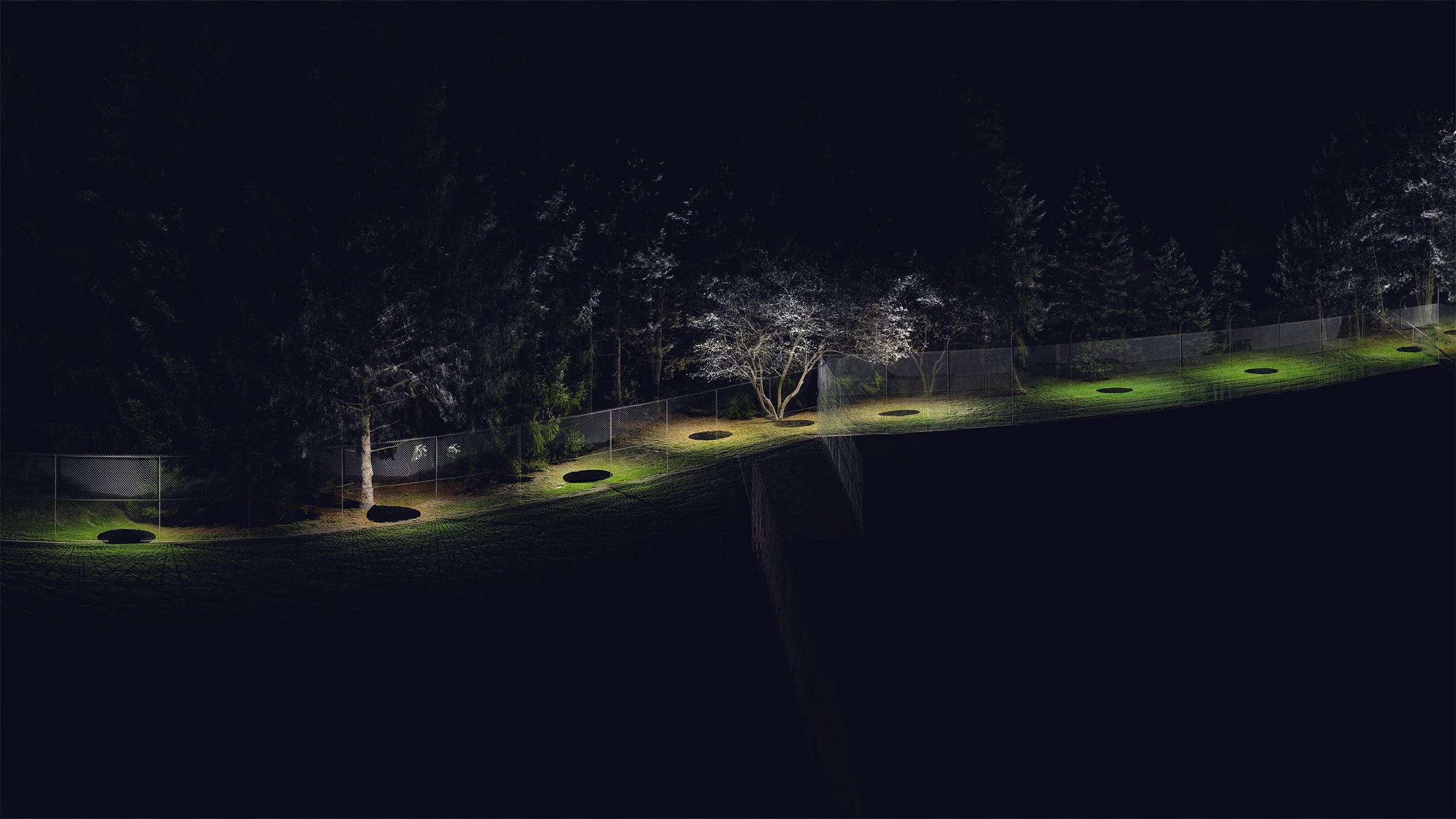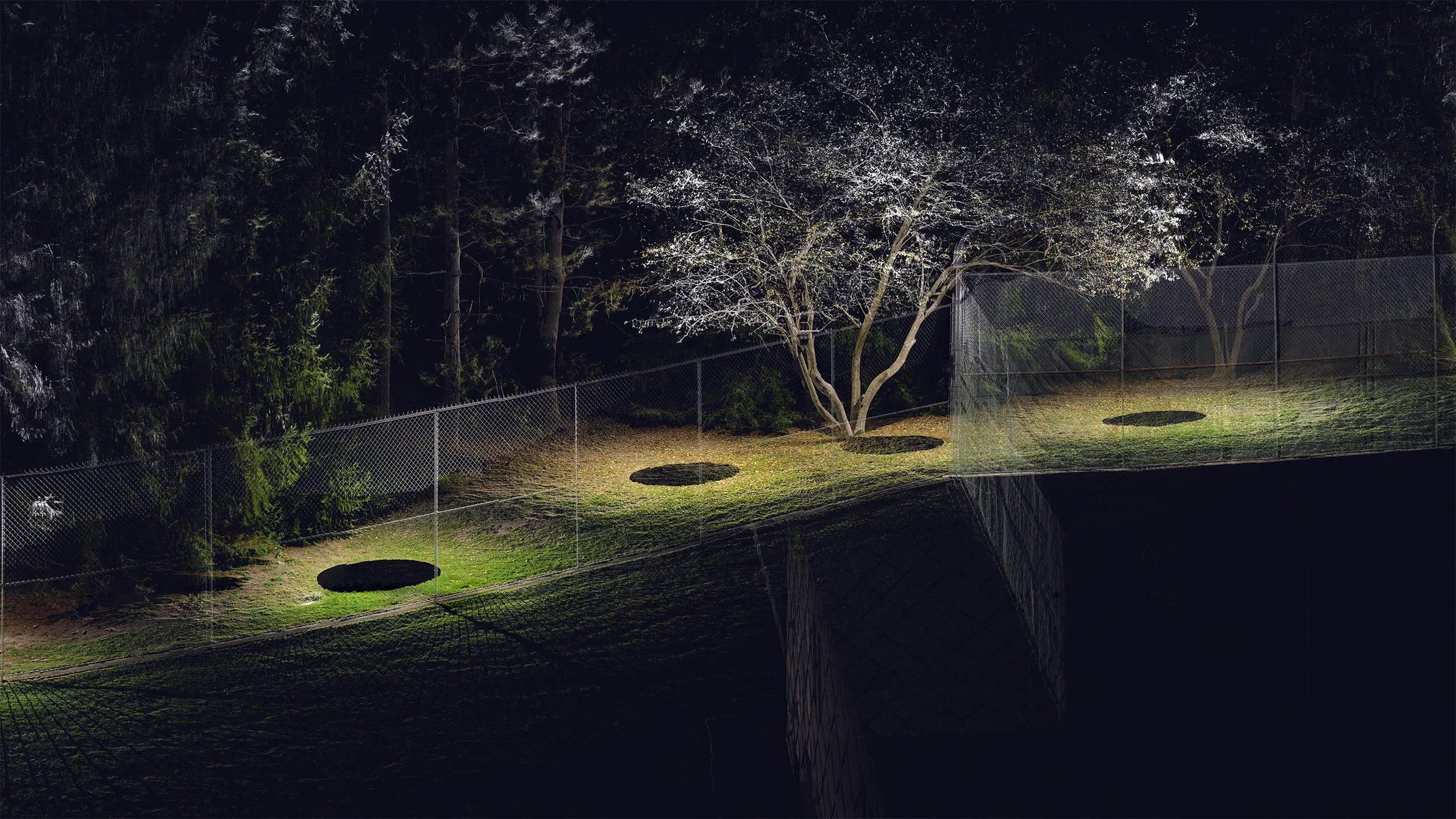BEHIND THE CLOUD: INTERROGATING DIGITAL TECHNOLOGIES
BEHIND THE CLOUD: INTERROGATING DIGITAL TECHNOLOGIES
Dan Paz & Aviva Avnisan
ARTWORKS

For Behind the Cloud, Dan Paz and Aviva Avnisan present their third site-specific iteration of the seeing machine as 440,918,749 points – the view from the Ingham County Youth Detention Center, Lansing, Michigan #3 as a print that hangs in the exhibition’s street-facing window. Rendered from custom software and data collected from 3D lidar scans, the gigapixel panoramic image depicts a youth detention center in Lansing, Michigan. Paz and Avnisan mapped the facility's architecture from the outside, gesturing toward panoptic surveillance history. Their work is a haunting and ghostly documentation of youth prison architecture, highlighting the landscape from which children are continuously placed via the perpetuation of the school-to-prison pipeline hidden in plain sight. Previous iterations of this work were displayed in an open circle gesturing to Jeremy Bentham’s panopticon prison architecture and the history of cycloramas. For this presentation, the artists adapted the seeing machine to the exhibition’s space giving consideration to the gallery’s unique architecture. The works hang in the gallery’s front window as five-panel strips towering over the installation space conveying the haunting presence of the surveillance technology and detention centers housed within our communities, often inconspicuously.
Further Reading
Dan Paz, Broken on a Wheel
Dan Paz, The Sun Never Knew workshop series
Artist Talk with Dan Paz, University of Applied Arts Vienna
Introduction to The Tenders
Artist Bios
Using vernacular image production, Dan Paz (they/them) brings a critical and aesthetic lens to the architecture of space, demonstrating how foundational techniques of image-making are inextricable from the environmental politics of racialized subject-making. Paz is a visual artist interested in the labor that surrounds the image from stages of research and thinking, to the material, print distribution / digital circulation, intellectual property, and historical frames that reveal information as metadata. Paz interrogates the intersections of captivity, architecture, and abolition, researching the commodification of lives to further understand, through emergent technologies, how light and shadow are used as a mechanism of power.
Paz’s projects have been featured in Hayward Gallery London, UK; the 12th Havana Biennial, Havana, CU; ENTRE, Vienna, Austria; The Media lab, NYC; The Lee Center for the Arts, The Jacob Lawrence Gallery, Seattle, WA; Holding Contemporary, Portland, OR; Michigan State University’s Scene Gallery, Lansing, MI; Stoveworks, Chattanooga, TN to name a few. Paz has hosted mapping workshops with Arizona State University, Vanderbilt University, University of Washington, University of Colorado at Boulder, Vienna Master of Applied Arts in Human Rights Program, Michigan State University. Currently, Paz is a PhD candidate in Cultural Studies & Science and Technology Studies at Unviersity of California, Davis
Aviva Avnisan (she/they) is an interdisciplinary artist whose work is situated at the intersection of image, text and code. Using a host of emerging technologies including 3D scanning, augmented reality and virtual reality, she creates applications for mobile devices, interactive installations and technologically mediated performances that seek to subvert dominant narratives through embodied encounters with language.
Aviva has presented her work nationally and internationally. Selected exhibitions and performances include: Inside Practice at the Art Institute of Chicago in Chicago, IL (2020); Between Bodies at The Henry Art Gallery in Seattle, Washington (2018-19); the Chicago Architecture Biennial (2017); and We Have Always Been Digital at The Kitchen in New York, NY (2016). She has been interviewed by BOMB Magazine and her work has been published in INDEX Vol. 6: An Annual Document of Performance Practice, the Electronic Literature Collection, Volume 3, and others.
Aviva holds an M.F.A. in Poetry from Brooklyn College and an M.F.A in Art and Technology Studies from The School of the Art Institute of Chicago. She is an Assistant Professor of Emerging Media & Technology and Media & Journalism at Kent State University.





